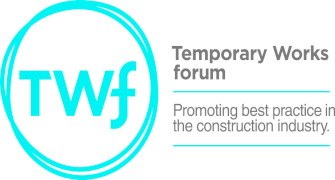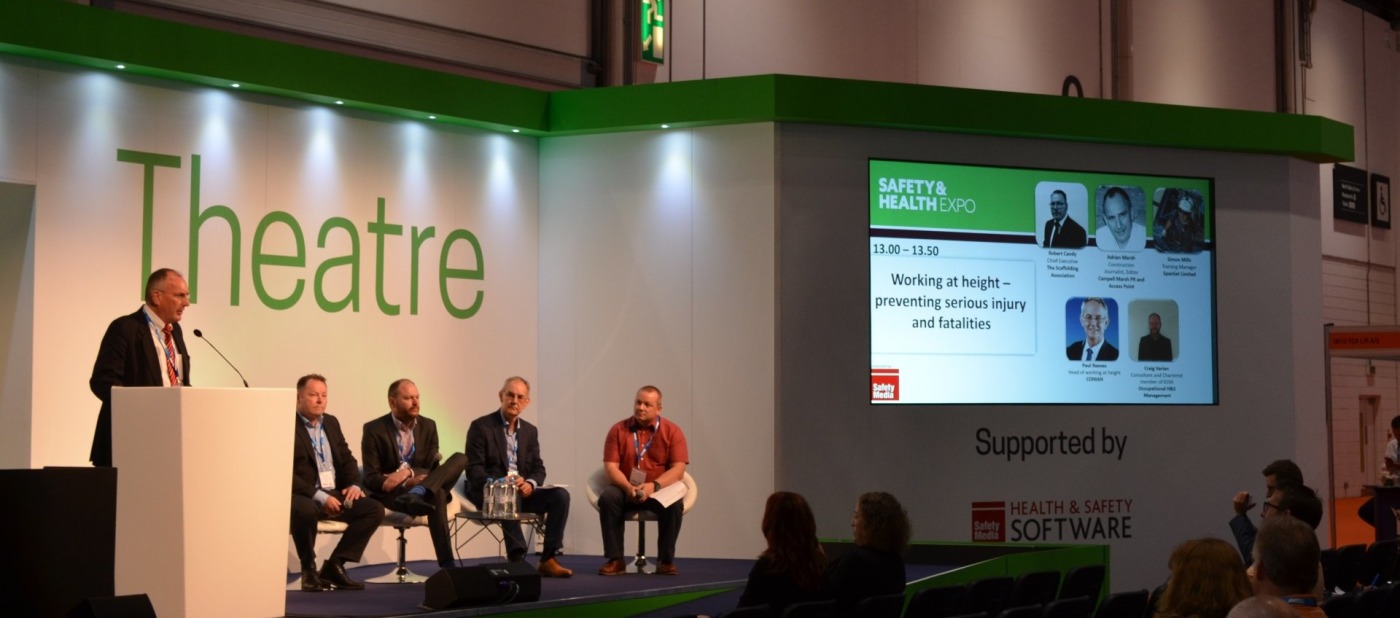Working at Height panel: Client behaviour essential area for improvement
10 Jul 2018
A panel of industry experts convened at Safety & Health Expo to discuss how organisations can further prevent serious injury and deaths when working at height.
Adrian Marsh, Director of Campbell Marsh Communications, opened the discussion by stressing the importance of proper planning of work at height tasks. Around one-fifth of non-fatal accidents in the construction industry are from falls from height, against one-in-ten in the agriculture and transport sectors. Why does construction have so many more, he asked?
The Scaffolding Association’s Chief Executive Robert Candy suggested that among the issues to address are the control measures that are in place. “People need to know they can say that they don’t want to do this, but it is difficult to create this sort of environment,” he accepted. “Too many people who work at height don’t think it will happen to them,” he added.
Craig Varian, an occupational health & safety management consultant, noted that client behaviour is a huge driver for safe working at height. It is often a “generalist subject”, he said, but actually it is a specialist area; to properly control the risks you need to get the right people at the right time.
CONIAN – the Construction Industry Advisory Network – was launched last year to share good practice and behaviour throughout the industry and its Head of Working at Height Paul Reeve countered that designers need to ‘design out’ work from height, while Simon Mitchell, Training Manager at fall protection company SpanSet, suggested that ensuring competence of those supervising, planning and managing working at height activities is key.
Marsh asked Varian if, in his role, would he change the existing regulations for working at height and if so, how? In response, Varian explained: “The Work at Height Regulations cover every incident, every area, which makes it difficult to apply to particular tasks. From a client/contractor point-of-view, the HSE needs to provide specific, applicable guidance,” he said.
Using technology for dangerous tasksDiscussing competency, the panel considered if the current definition is appropriate. Mitchell suggested that it is possibly not appropriate; the Regulations don’t specify what competence is.
Candy added that when you’re looking at competence, you must choose the right people for the job. There should not be a general approach to competency, he said, but rather a hierarchy of control measures approach to it.
Reeve stressed that unplanned work at height should not be happening, that workers should not be put in that position. At this point, the role of technology came up. Things like drones, can be used to carry out at height inspections, preventing the need for people having to do it. Marsh even quoted Sir Clive Woodward’s keynote session from earlier in the day: ‘Those who master technology will be winners.’
Step ladder fallsAn audience member highlighted the issue of falls from below 4-5 meters and perception of risk. In response, Reeve pointed out that step ladder falls can kill, while Varian suggested low-level falls tend to be the result of non-planned work, which explains why there are so many accidents of this kind. Candy commented: “When work at height is seen as an aside to a trade (like an electrician), there is a difficulty in training; the task is a ‘one-off’; again, it’s a competence issue.”
Importance of dataMarsh highlighted how data can be utilised to improve performance; enhanced reporting can lead to a better understanding of incidents and ultimately reduce falls from height. In response, Reeve suggested: “There is not enough useful data in this area and if we had more, we could pick off the main causes of fall from height accidents.”
Candy contended: “Data is important, but getting to the root cause is essential. Data doesn’t give an understanding of why did that happen. We need situational, useful data to find out the cause.”
Varian added to this, noting: “Data has some value but not huge amounts. Lots of issues are on smaller sites and underreporting is common with SMEs. They have no ability to break down root causes. Just giving lots of statistics and figures gives no joined up approach.”
Summing up the session Marsh highlighted the three areas to emerge from the discussion, which could help prevent injuries and fatalities from work at height:
- pre-planning of tasks will prevent problems
The Scaffolding Association
Website
T: 0300 124 0470
10C Abbey Lane Court
Abbey Lane
WR11 4BY
Evesham, Worcestershire
United Kingdom

Product News
S&HE 19/6/19 Roles and Responsibilities for Working at Height panel discussion

Product News
The Scaffolding Association joins the Temporary Works Forum
As part of its continuing strategy to improve the
standards of scaffolding and access within the construction industry, the
Scaffolding Association has become a member of the Temporary Works Forum (TWF).

Product News
The Scaffolding Association and SMAS Worksafe launch Construction Connects events in London and Bristol
The Scaffolding Association has combined with SMAS
Worksafe (Safety Management Advisory Services Limited) to bring together two
‘Meet the Buyer’ style events called Construction Connects in London on
27th June and Bristol on 2nd July.
List your business for free
Create a business listing on the SHP directory
Advertise with us
Download our media pack, and find out how we can meet your needs with a range of pricing options.


